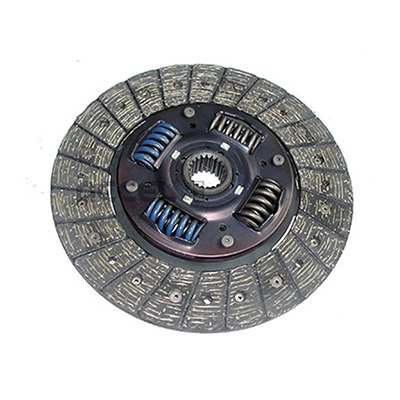- Arabic
- French
- Russian
- Spanish
- Portuguese
- Turkish
- Armenian
- English
- Albanian
- Amharic
- Azerbaijani
- Basque
- Belarusian
- Bengali
- Bosnian
- Bulgarian
- Catalan
- Cebuano
- Corsican
- Croatian
- Czech
- Danish
- Dutch
- Afrikaans
- Esperanto
- Estonian
- Finnish
- Frisian
- Galician
- Georgian
- German
- Greek
- Gujarati
- Haitian Creole
- hausa
- hawaiian
- Hebrew
- Hindi
- Miao
- Hungarian
- Icelandic
- igbo
- Indonesian
- irish
- Italian
- Japanese
- Javanese
- Kannada
- kazakh
- Khmer
- Rwandese
- Korean
- Kurdish
- Kyrgyz
- Lao
- Latin
- Latvian
- Lithuanian
- Luxembourgish
- Macedonian
- Malgashi
- Malay
- Malayalam
- Maltese
- Maori
- Marathi
- Mongolian
- Myanmar
- Nepali
- Norwegian
- Norwegian
- Occitan
- Pashto
- Persian
- Polish
- Punjabi
- Romanian
- Samoan
- Scottish Gaelic
- Serbian
- Sesotho
- Shona
- Sindhi
- Sinhala
- Slovak
- Slovenian
- Somali
- Sundanese
- Swahili
- Swedish
- Tagalog
- Tajik
- Tamil
- Tatar
- Telugu
- Thai
- Turkmen
- Ukrainian
- Urdu
- Uighur
- Uzbek
- Vietnamese
- Welsh
- Bantu
- Yiddish
- Yoruba
- Zulu
marras . 17, 2024 11:24 Back to list
Choosing the Right Drive Belt for Your Vehicle's Optimal Performance
Understanding Car Drive Belts Essential Components for Vehicle Performance
A drive belt in a car plays a vital role in the overall functionality of the vehicle. Often overlooked, this critical component is responsible for transferring power from the engine to various accessories. Understanding the significance, types, and maintenance of drive belts can help car owners ensure their vehicles operate smoothly and efficiently.
What is a Drive Belt?
A drive belt is a flexible loop of material that is designed to link, or drive, multiple rotating shafts in a car's engine. The most common types of drive belts include serpentine belts and timing belts. The serpentine belt is a single, continuous belt that drives multiple peripheral devices such as the alternator, power steering pump, air conditioning compressor, and water pump. It is advantageous because it reduces the number of belts needed, minimizing the space under the hood and simplifying replacement procedures.
In contrast, the timing belt is a more specialized component that synchronizes the rotation of the crankshaft and camshaft. This ensures that the engine's valves open and close at the appropriate times during each cylinder's intake and exhaust strokes. Timing belts are crucial in engines where precision timing is necessary for optimal performance.
Importance of Regular Maintenance
Regular maintenance of drive belts is essential for car longevity and performance. Over time, drive belts can wear out due to heat, friction, and environmental factors. Signs of a failing belt include squeaking noises, visible cracks or fraying, and decreased performance of accessories driven by the belt. If a timing belt fails, it can cause severe engine damage, making routine inspections crucial.
drive belt for car

Typically, serpentine belts should be inspected every 50,000 to 100,000 miles and replaced if signs of wear are observed. Timing belts, on the other hand, are generally replaced after a set interval, often between 60,000 to 100,000 miles, depending on the manufacturer’s recommendations. It is vital for car owners to check their vehicle’s owner’s manual for specific guidance regarding drive belt maintenance.
Choosing the Right Replacement
When replacing a drive belt, choosing the right type and size is critical. Quality matters—opt for OEM (Original Equipment Manufacturer) belts or those recommended by automotive professionals to ensure proper fit and longevity. Installing a substandard belt can lead to premature failures and further complications.
Professional mechanics often suggest performing a visual inspection of the belt's condition during routine maintenance. If any signs of wear or damage are found, replacing the belt promptly can prevent more significant issues down the line.
Conclusion
Drive belts are essential components that significantly impact a vehicle's performance and efficiency. Understanding their role, performing regular maintenance, and knowing when to replace them can extend the life of your car and enhance your driving experience. By prioritizing the upkeep of these crucial components, car owners can avoid potentially costly repairs and ensure their vehicles run smoothly for years to come. Remember, a small investment in maintenance today can lead to substantial savings and peace of mind tomorrow.
-
Korean Auto Parts Timing Belt 24312-37500 For Hyundai/Kia
NewsMar.07,2025
-
7PK2300 90916-T2024 RIBBED BELT POLY V BELT PK BELT
NewsMar.07,2025
-
Chinese Auto Belt Factory 310-2M-22 For BMW/Mercedes-Benz
NewsMar.07,2025
-
Chinese Auto Belt Factory 310-2M-22 For BMW/Mercedes-Benz
NewsMar.07,2025
-
90916-02660 PK Belt 6PK1680 For Toyota
NewsMar.07,2025
-
drive belt serpentine belt
NewsMar.07,2025

